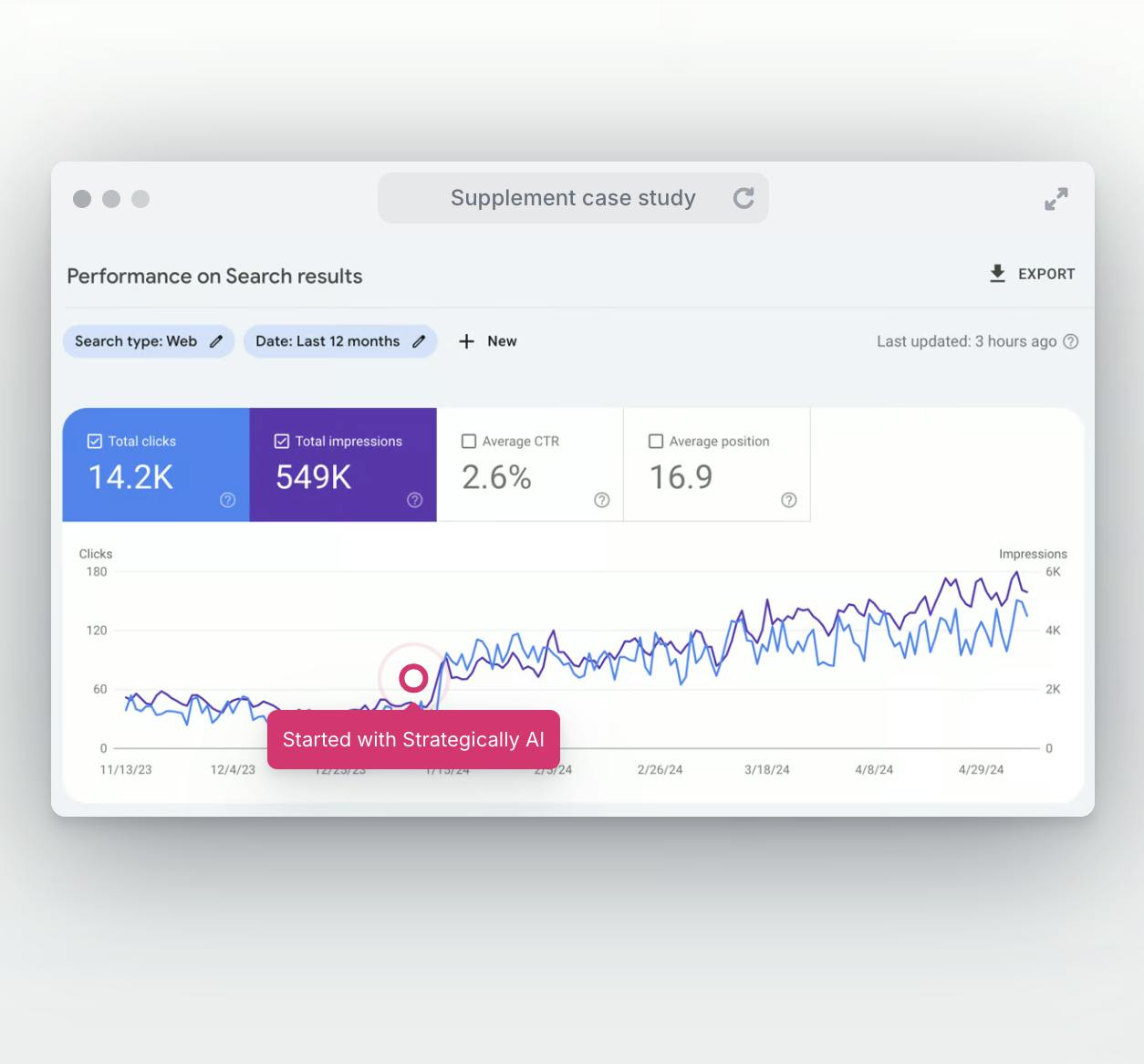In today's fast-paced digital world, content is not just king; it's the currency of the realm. As brands and individuals vie for attention in an overcrowded online space, the ability to scale content creation effectively can make the difference between obscurity and prominence. But scaling is more than just ramping up volume; it's about increasing your content output without sacrificing quality, engagement, or relevance.
Introduction to Scaling Content Creation
The journey of scaling content creation is akin to setting sail across vast digital oceans. It's about navigating through uncharted waters with an eye on expanding your territories. For content creators, this means strategizing, systematizing, and optimizing the content production process to meet growing demands without diluting the essence of the message you wish to convey.
As the digital landscape evolves, so does the need for content that not only captures attention but holds it. Therefore, scaling content isn't solely about quantity; it's the art of crafting and disseminating your message across multiple channels and formats, ensuring it strikes a chord with your audience every single time.
Understanding the Demand for Content
To scale content creation efficiently, one must first decipher the code behind the increasing demand for content. Is the push driven by an expanding target audience, an evolving industry landscape requiring more extensive topic coverage, or a strategic shift towards a more content-centric marketing approach? Each of these drivers demands a nuanced understanding of content scaling.
Consider the insights gathered from your audience and market research. What are the topics that they are most interested in? How is your competition meeting these needs? These answers will shape the strategies you adopt in your content scaling journey.
Establishing Your Content Goals
Scaling your content begins with setting robust, attainable goals. Imagine embarking on a treasure hunt without a map; sure, you might stumble upon something valuable, but will it lead you to the treasure you seek? Similarly, without clear objectives, content creation becomes a directionless exercise.
Goals should be SMART: Specific, Measurable, Achievable, Relevant, and Time-Bound. Whether it's boosting SEO rankings, driving traffic, increasing user engagement, or elevating your brand's thought leadership stature, your goals will lay the foundation for a scalable content strategy.
Crafting a Comprehensive Content Strategy
Once goals are set, a well-structured content strategy becomes the compass guiding your ship. This strategy outlines what to create, the channels for distribution, and the frequency of publication. It bridges the gap between broader business objectives and content goals, ensuring that every piece of content serves a purpose.
Understanding Your Audience
Knowing your audience is paramount. They are the guests of honor at your banquet, and everything you create should cater to their tastes. Detailed audience analysis can reveal insights about their preferences, pain points, and digital consumption habits, enabling you to create content that resonates and engages.
The Blueprint: Creating a Content Calendar
A content calendar acts as the architect's blueprint, allowing for meticulous planning and execution of content strategies. It helps prevent the chaos of ad-hoc publishing and ensures a consistent stream of content, keeping your audience engaged and informed.
SEO: The Beacon of Visibility in Content Scaling
In the quest for scalability, SEO serves as the beacon that ensures your content is visible in the vast ocean of information. It involves understanding the keywords your audience uses, the type of content they seek, and optimizing your content to rank well on search engine results pages (SERPs).
Leveraging Technology in Content Creation
As with any ambitious endeavor, the right set of tools can significantly ease the process. From content management systems that keep your digital assets well-organized to SEO tools that help in keyword planning and competitive analysis, technology is an indispensable ally in scaling content.
The Role of Automation Tools
Automation tools are the industrious deckhands on your content creation ship, taking care of repetitive tasks such as scheduling social media posts or sending out newsletters, freeing you to focus on creative and strategic tasks that require a human touch.
CMS: The Backbone of Content Organization
A robust Content Management System (CMS) acts as the backbone of your content organization efforts, allowing you to publish, edit, and manage content seamlessly as your volume grows. It's an essential tool for maintaining control over the quality and consistency of your scaled content efforts.
Mastering the Art of Content Repurposing
Repurposing content is a masterful strategy in the content scaling arsenal. It involves breathing new life into existing content by presenting it in different formats across various platforms, thus extending its reach and utility without reinventing the wheel.
The Delicate Balance: Curating and Creating
Curating content complements the creation process by introducing external content that aligns with your brand's message and adds value to your audience's experience. It's about striking a balance between showcasing others' expertise and establishing your own.
Strategies for Effective Content Repurposing
Repurposing isn't just about changing the format; it's about altering the content's context to fit new platforms and audiences. It could be as simple as turning a blog post into a podcast or as complex as transforming a series of articles into an authoritative eBook. This maximizes your content's impact and extends its shelf life.
Expanding Your Content Team
To sail farther, you need a larger crew. Scaling content might mean growing your team by bringing on board freelancers, contractors, or by fostering your in-house talent.
Hiring Freelancers and Contractors
Freelancers and contractors bring specialized skills on an as-needed basis, allowing for flexibility in scaling efforts. They can be the sharpshooters, hitting targets with expertise without the long-term commitment of full-time hires.
Training In-House Content Creators
Investing in the growth and development of your in-house team is akin to nurturing your garden. It leads to a more cohesive and brand-aligned content production that resonates with the audience, as these creators are deeply ingrained with the brand's ethos.
Collaborations and Partnerships
Forming alliances can amplify your content's reach and richness. Collaborative efforts can fill gaps in expertise and lend new perspectives, making the content more diverse and appealing to a broader audience.
Measuring Content Success
The quest for scaling content is not complete without a mechanism to measure its success. KPIs serve as your compass, ensuring you stay on course, while analytics are the wind in your sails, pushing you in the right direction.
Key Performance Indicators (KPIs)
KPIs must be carefully selected to reflect the goals set forth at the beginning of your scaling journey. They could include metrics related to engagement, lead generation, or even sales conversions.
Adjusting Your Strategy Based on Analytics
Analytics are the feedback needed to adjust your sails. They help in identifying the strengths and weaknesses of your content strategy, allowing for data-driven decisions that steer your content towards greater success.
Scaling content creation is a strategic endeavor that merges the art of storytelling with the science of marketing analytics. It is a continuous loop of planning, executing, measuring, and refining. By embracing these principles, you can embark on a journey of content creation that not only scales in quantity but soars in quality, engagement, and impact.
Conclusion
Embarking on the journey of scaling content creation is akin to charting a course for new horizons—it requires vision, preparation, and the ability to adapt. It's not enough to produce content at scale; each piece must be a thread in the larger tapestry of your brand's narrative. As you expand your content reach, you must remain anchored in the core values and needs of your audience, ensuring each blog post, video, infographic, and tweet strengthens the relationship between you and your followers.
The delicate balancing act of scaling content involves intertwining the threads of creativity with the cords of analytics. Through smart planning, careful execution, and continual optimization, your content will not only achieve greater heights but will resonate more deeply with its intended audience. The process of scaling is cyclical, always evolving, and requires a consistent commitment to excellence and innovation.
As you cast your net wider in the vast sea of digital content, remember that the quality of your catch is just as important as the quantity. Nurture your content ecosystem with strategic thought and a human touch, and watch as it grows into a bountiful harvest that feeds not just the eyes but the minds and souls of your audience.
Frequently Asked Questions
How do I maintain consistency in my content while scaling up?
Maintaining consistency in your content while scaling up is a matter of stringent quality control and a well-defined brand voice. Establish content guidelines and ensure that all team members are on the same page regarding the tone, style, and messaging of your content. Regular audits and reviews can help keep the consistency in check.
Can too much content ever be a bad thing?
While abundance is generally positive, too much content can overwhelm your audience or dilute your brand's message. It's crucial to strike a balance and focus on the value each piece of content brings to your audience. Always prioritize quality over quantity and relevance over sheer volume.
What are some common mistakes businesses make when scaling content?
One of the common mistakes is losing sight of the audience's needs and preferences in the rush to produce more content. Other errors include neglecting SEO, underestimating the resources required for quality content creation, and failing to measure and analyze content performance.
How do you measure the ROI of scaled content creation?
The ROI of scaled content creation can be measured through various KPIs such as traffic growth, lead generation, conversion rates, engagement metrics, and ultimately, sales revenue attributed to content marketing efforts. It's important to have a robust analytics system in place to track these metrics over time.
How can small teams scale content without significant investment?
Small teams can scale content by leveraging content repurposing, adopting a mix of curated and created content, and utilizing free or low-cost automation and planning tools available online. Collaborations, user-generated content, and focusing on high-impact content types can also help scale efforts without a significant upfront investment.








